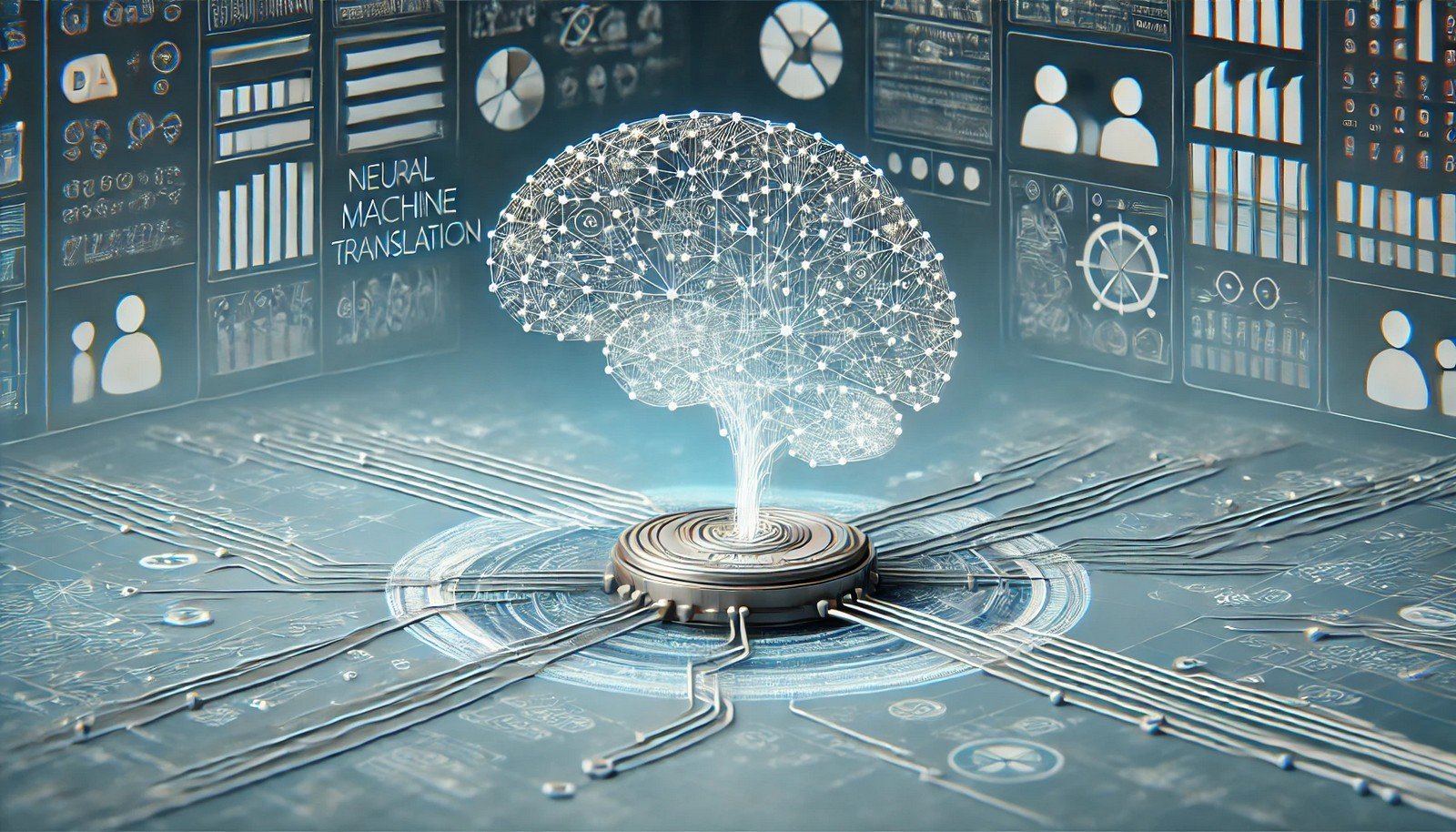Neural Machine Translation (NMT)

Quick Navigation:
- Neural Machine Translation Definition
- Neural Machine Translation Explained Easy
- Neural Machine Translation Origin
- Neural Machine Translation Etymology
- Neural Machine Translation Usage Trends
- Neural Machine Translation Usage
- Neural Machine Translation Examples in Context
- Neural Machine Translation FAQ
- Neural Machine Translation Related Words
Neural Machine Translation Definition
Neural Machine Translation (NMT) is a type of AI-based language translation that uses neural networks to predict the sequence of words in a target language based on the input sequence in a source language. By employing deep learning, NMT improves translation quality by understanding context, syntax, and semantics. Unlike traditional methods that translate word-by-word, NMT captures the entire meaning of sentences, leading to translations that are more fluent and human-like. Popular NMT models include Transformer and Seq2Seq, powering major applications such as Google Translate.
Neural Machine Translation Explained Easy
Imagine a smart robot that learns languages. When you tell it a sentence in one language, it tries to understand the entire sentence and then says it in another language in a way that sounds natural, not robotic. This robot uses a special way of learning, which helps it remember patterns and meanings of words, making it really good at translating.
Neural Machine Translation Origin
NMT emerged in the 2010s, revolutionizing translation with deep learning advancements. Previously, statistical machine translation (SMT) was the norm, but the release of deep neural networks transformed the field. The introduction of Google’s NMT system in 2016 marked a pivotal shift, setting a new standard for translation accuracy and fluidity.
Neural Machine Translation Etymology
The term “neural” refers to the use of neural networks in processing translations. “Machine translation” highlights the automated nature of translation, distinguishing it from human-driven language translation.
Neural Machine Translation Usage Trends
With rapid global digitalization, NMT usage has surged, especially in businesses and services that operate internationally. Tech giants like Google, Microsoft, and Facebook leverage NMT to provide real-time translations across languages. NMT is also embedded in personal devices and apps, becoming integral to daily digital interactions, especially with the rise of mobile communication.
Neural Machine Translation Usage
- Formal/Technical Tagging:
- Natural Language Processing (NLP)
- Artificial Intelligence (AI)
- Deep Learning - Typical Collocations:
- "neural translation model"
- "NMT algorithm"
- "deep learning-based translation"
- "real-time NMT"
Neural Machine Translation Examples in Context
- NMT is used in Google Translate to provide high-quality translations for users worldwide.
- Microsoft integrates NMT into Word and other software to facilitate multilingual content creation.
- Businesses use NMT for translating customer support chats, enabling better communication across regions.
Neural Machine Translation FAQ
- What is neural machine translation?
NMT is an AI-driven approach to translation that uses neural networks to generate more accurate and natural translations. - How is NMT different from traditional translation methods?
Unlike word-by-word translation, NMT uses entire sentences to understand context, improving translation accuracy and fluency. - Which companies use NMT?
Companies like Google, Microsoft, and Facebook utilize NMT for their translation services. - Why is NMT important?
NMT enables accurate and quick translations, breaking language barriers in business, travel, and everyday communication. - Can NMT handle complex languages?
Yes, NMT can translate complex languages by learning patterns and structures, though its accuracy varies with language pairs. - What are the common applications of NMT?
NMT is used in mobile apps, web translation services, and business communication tools. - How does NMT learn languages?
NMT models train on large datasets of multilingual text to learn language patterns and produce accurate translations. - Is NMT used in real-time applications?
Yes, NMT powers real-time translation in devices, apps, and platforms for seamless communication. - Does NMT work with specialized language or jargon?
NMT is effective with general language but can struggle with highly specialized terms unless trained on specific datasets. - How has NMT changed since its introduction?
NMT has evolved with better algorithms and larger datasets, making it more accurate and accessible.
Neural Machine Translation Related Words
- Categories/Topics:
- Natural Language Processing
- Deep Learning
- Translation Technology
Did you know?
NMT has become crucial in global e-commerce. Many businesses rely on it to localize product descriptions, enhancing international customer experience. This instant, AI-powered translation opens doors to wider markets and boosts sales by making products accessible in multiple languages.
PicDictionary.com is an online dictionary in pictures. If you have questions or suggestions, please reach out to us on WhatsApp or Twitter.Authors | Arjun Vishnu | @ArjunAndVishnu

I am Vishnu. I like AI, Linux, Single Board Computers, and Cloud Computing. I create the web & video content, and I also write for popular websites.
My younger brother, Arjun handles image & video editing. Together, we run a YouTube Channel that's focused on reviewing gadgets and explaining technology.



Comments powered by CComment